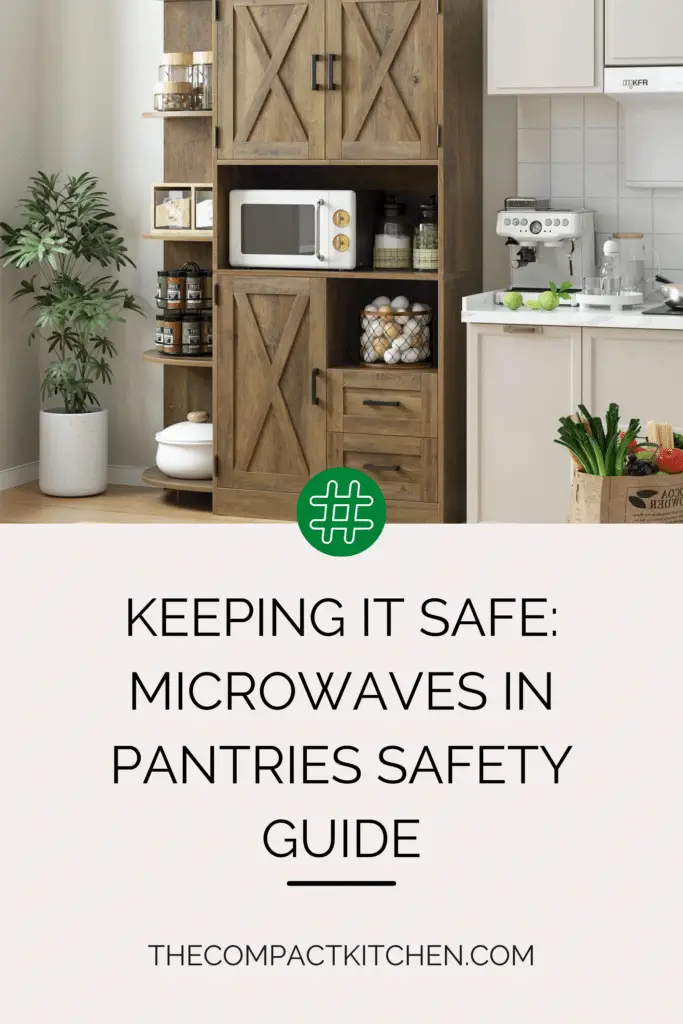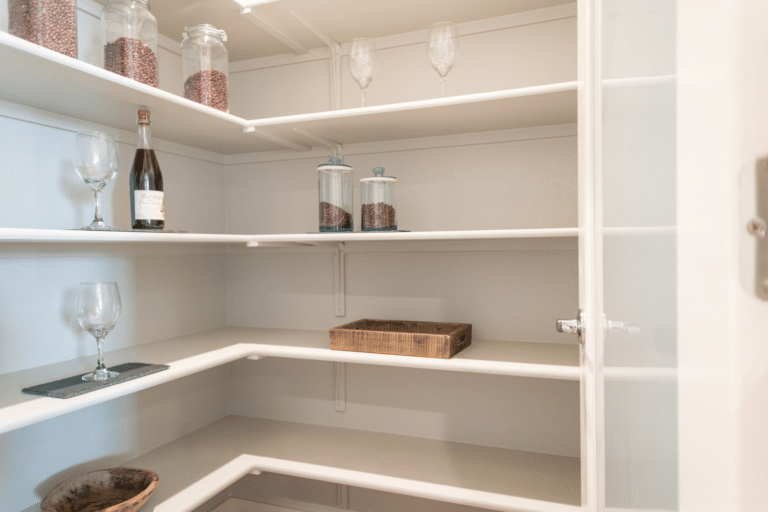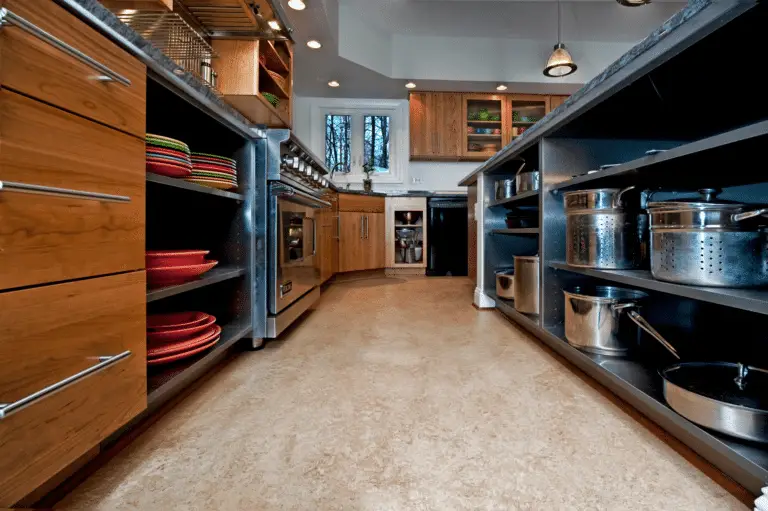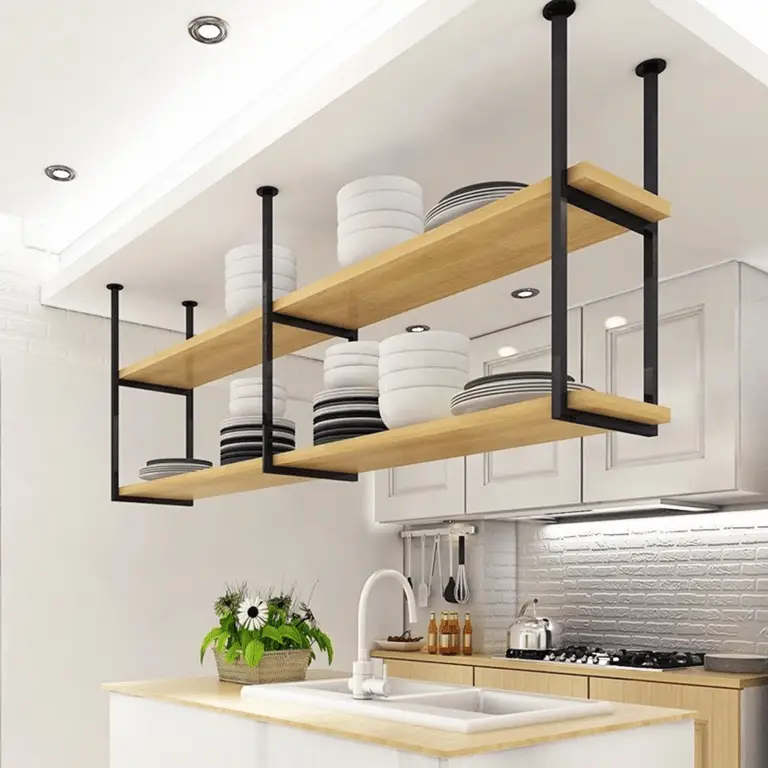Let’s talk about something crucial – microwave safety in pantries. It’s more than just popping leftovers in and hitting ‘start’. We’ll delve into why it’s so important, how to position your microwave correctly, key safety practices, regular maintenance tips, and what to do in case of an accident.
Stay tuned for some essential safety tips for microwaves in pantries. Let’s keep things cooking safely!

Understanding the Importance of Microwave Safety in Pantries

When it comes to utilizing microwaves in pantries, safety should always be a top priority. Understanding the significance of practicing microwave safety is crucial in preventing potential risks and hazards that can arise from improper use.
Insight into why practicing microwave safety is necessary
Microwaves are convenient kitchen appliances that can speed up meal preparation and cooking. However, overlooking safety measures can lead to disastrous consequences such as fires, electrical hazards, or even injuries. By following microwave safety guidelines, you can significantly reduce the risk of accidents.
Discuss potential risks associated with improper microwave use

Improper microwave use, especially in pantries where ventilation may not be ideal, can pose various risks. Placing the microwave too close to flammable items or obstructing air vents can increase the likelihood of overheating and potential fires. By understanding these risks, you can take the necessary precautions to ensure safe microwave usage.
Positioning Your Microwave Correctly in the Pantry
When it comes to setting up your pantry, the correct placement of your microwave is crucial for safety. Whether you’re redesigning your storage space or simply rearranging your appliances, taking a few extra moments to position your microwave properly can make all the difference.
Crucial Instructions for Correct Microwave Placement
First and foremost, make sure your microwave has enough ventilation space around it. Placing it too close to the wall or other kitchen items can restrict airflow and cause the device to overheat. This can not only damage the microwave but also create a fire hazard in your pantry.
Additionally, be mindful of where the microwave door opens. Avoid positioning it towards any flammable materials or cluttered areas. In the event that something goes wrong during the heating process, you don’t want the door swinging open towards a potentially hazardous situation.
Impact of Haphazard Microwave Placement
Unfortunately, many homeowners underestimate the importance of proper microwave placement. It’s not uncommon to see microwaves tucked away in tight spaces or perched on unstable surfaces in pantries. However, this seemingly harmless act can have serious consequences.

Placing your microwave in a cramped pantry corner without adequate ventilation not only compromises its performance but also increases the risk of fire. Microwaves need space to breathe, quite literally. By setting it up in a well-ventilated area, you are not only extending the lifespan of your appliance but also ensuring the safety of your pantry.
Safe Microwave Usage in Pantries
Using a microwave in the pantry can be convenient, but it’s essential to prioritize safety to prevent any accidents or damage to the device. By following some key safety practices, you can ensure that your pantry microwave remains a useful and safe appliance in your home.
Using Microwave-Safe Containers
One of the most crucial safety tips for microwaves in pantries is to always use microwave-safe containers. These containers are specifically designed to withstand the heat generated by the microwave and prevent any potential hazards. Using non-microwave-safe containers can lead to melting or releasing harmful chemicals into your food.

When selecting containers for your pantry microwave, look for labels that indicate they are safe for microwave use. Additionally, avoid using plastic containers that are not labeled as microwave-safe, as they can release toxins when exposed to heat.
Avoiding Metal Objects and Aluminum Foil
Another important safety measure when using a microwave in the pantry is to avoid using metal objects or aluminum foil. Metal can cause sparks and potentially lead to a fire when placed in the microwave, so it’s crucial to only use microwave-safe materials.

Always transfer food to microwave-safe dishes before heating them in the microwave, and never use aluminum foil to cover your food unless it is labeled as safe for microwave use. By following these simple precautions, you can prevent accidents and ensure that your pantry microwave remains in good working condition.
Remember, safety should always be the top priority when using any kitchen appliance, including microwaves. By following these safety guidelines for microwaves in pantries, you can enjoy the convenience of quick and easy meals without compromising the safety of your home.
Regular Maintenance and Cleaning for Microwave Safety
When it comes to ensuring the safety of your microwave in the pantry, regular maintenance and cleaning play a crucial role. Just like any other appliance, microwaves require proper care and attention to function efficiently and safely. Here are some key takeaways on why regular maintenance and cleaning are essential for microwave safety:
Preventing Fire Hazards
One of the most important reasons to keep your microwave clean and well-maintained is to prevent fire hazards. Over time, food spills and splatters can accumulate inside the microwave, especially if left uncleaned. These food particles can catch fire when heated, posing a serious risk to your safety. By regularly cleaning your microwave, you can minimize the chances of a fire starting and ensure safe usage.
Extending the Lifespan of Your Microwave
Regular maintenance not only keeps your microwave safe but also helps extend its lifespan. Neglecting to clean and maintain your microwave can lead to mechanical issues, decreased efficiency, and ultimately, the need for costly repairs or replacement. By following proper cleaning and maintenance routines, you can ensure that your microwave operates smoothly and efficiently for years to come.
Guidance on Cleaning and Maintenance
So, how exactly should you go about cleaning and maintaining your microwave for optimal safety? Start by unplugging the microwave and removing any removable parts, such as the turntable and racks. Use a mild detergent or microwave-safe cleaner to wipe down the interior and exterior surfaces, paying extra attention to areas with food buildup. Be sure to dry all surfaces thoroughly before reassembling the microwave.

Additionally, it’s essential to regularly check for signs of wear and tear, such as damaged seals or faulty buttons. If you notice any issues, it’s best to address them promptly to prevent potential safety hazards. By incorporating these cleaning and maintenance practices into your routine, you can enjoy safe and hassle-free microwave usage in your pantry.
What to Do in Case of a Microwave-Related Accident
While practicing microwave safety measures in your pantry is essential to prevent accidents, there may still be instances where accidents occur unexpectedly. In case of a microwave-related accident, it is crucial to know the proper steps to take to ensure your safety and the safety of those around you.
Steps to Take if a Microwave-Related Accident Does Occur:
1. Unplug the Microwave: The first step to take in case of a microwave-related accident is to immediately unplug the device from the power source. This can help prevent further damage or potential risks of electric shock.
2. Assess the Situation: Once the microwave is unplugged, assess the situation to determine the extent of the accident. Look for any visible signs of damage, smoke, or fire.
3. Evacuate the Area: If you notice smoke, a burning smell, or flames coming from the microwave, evacuate the area immediately. Close the pantry door behind you to contain the situation.
4. Contact Emergency Services: If the accident has resulted in a fire that you cannot control, contact emergency services right away. Do not attempt to put out the fire yourself if it is spreading rapidly.
5. Seek Professional Aid: After ensuring your safety and the safety of others, contact a professional technician to assess the damage to the microwave. Do not attempt to repair the device yourself, as this can pose further risks.
When and How to Seek Professional Aid for Repairing or Replacing Microwaves:
If the microwave has been damaged in an accident, it is crucial to seek professional aid for repair or replacement. Do not continue using a damaged microwave, as this can lead to further risks and hazards. Contact the manufacturer or a certified technician to assess the damage and provide guidance on the next steps to take.
Stay Safe, Microwave Masters!
Remember, safety always comes first when dealing with microwaves in pantries. Practice proper placement, safe usage, regular maintenance, and know what to do in case of accidents. By following these safety tips for microwaves in pantries, you can ensure a hazard-free cooking experience. Stay safe, stay smart, and enjoy your meals without any worries. Happy cooking, everyone!








